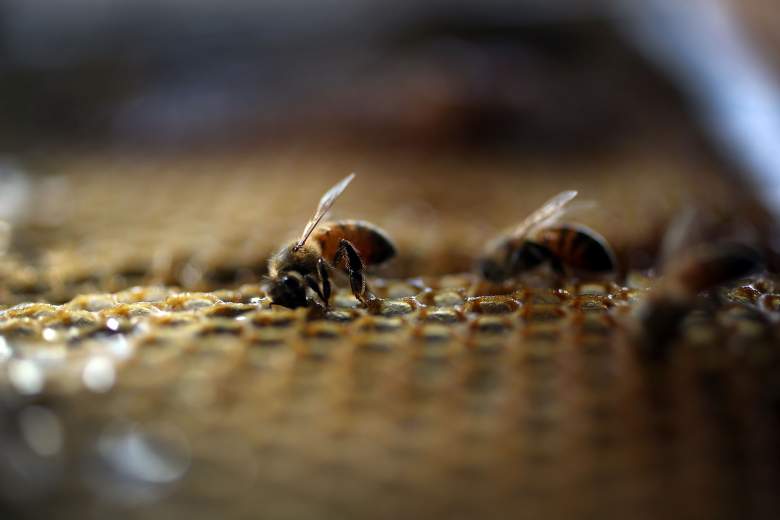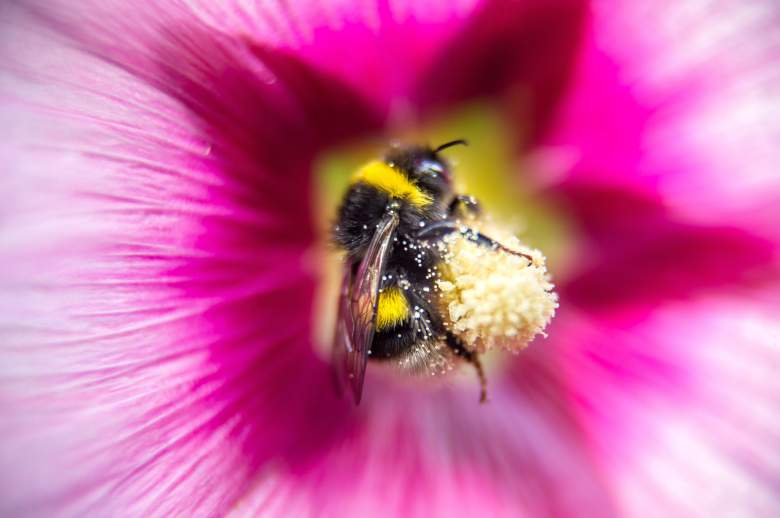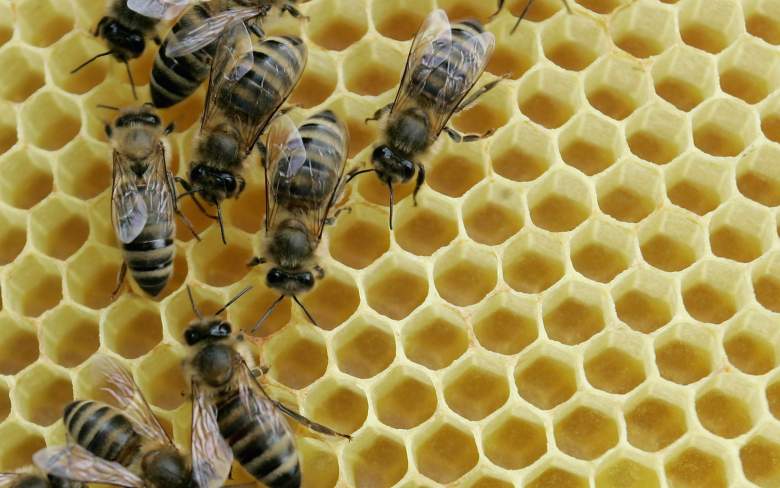With the bee population decreasing around the world, General Mills launched a partnership with Veseys Seeds to give away 100 million wildflower seeds. The cereal brand is also removing mascot Buzz from boxes of Honey Nut Cheerios to raise awareness for the plight of bees. The campaign has been named “#BringBackTheBees.”
Here’s a look at the campaign and how wildflower seeds are supposed to help bring back the bee population.
1. To Get #BringBackTheBees Started, General Mills Is Giving Away 100 Million Wildflower Seeds

(Getty)
To get your free wildflower seeds, all you have to do is click here to go to Cheerios.com/BringBackTheBees. There, you enter your name and address, and the seeds will be delivered to you in four to six weeks. Canadians can get their free seeds by clicking here.
The site shows that General Mills and Veseys Seeds have already reached their goal to give away 100 million free seeds. However, the giveaway will continue through the spring.
“As a General Mills cereal built around nutrition, helping pollinators get the key nutrition they need through fun, family friendly activities like planting wildflowers is a natural fit,” Cheerios marketing director Susanne Prucha said in a statement.
2. Wildflowers Can Be Used to Attract Bees & Other Pollinators

(Getty)
According to BuzzAboutBees.net, wildflowers can be used to attract bees, as well as butterflies and other pollinators. They are the best plants for bees and a “bee garden” should have a few at its border. The site also notes that it is important to plant wildflowers that are native to your country.
As a 2005 National Wildlife Foundation article noted, there used to be unique American wildflowers all over the country, but construction, farming and population growth have caused many of them to be threatened. In 2005, “nearly one-fourth of the 20,000 known native flowering plant species in the United States are considered threatened or of conservation concern,” the NWF noted.
Recently, there has been a movement in the U.S. to bring back wildflowers to save the bee population. For example, in February, Popular Science reported that Cedar Rapids, Iowa will play 188 acres of native prairie grasses and wildflowers to cover 1,000 acres of land for pollinators.
3. The Rusty Patched Bumblebee Population Has Dropped by 87 Percent Since the Late 1990s

(Getty)
The rusty patched bumblebee used to be everywhere as recently as the 1990s. But now, it is the first bee of any kind in the contiguous 38 states to join the Endangered Species list. According to the U.S. Fish & Wildlife Service, the rusty patched bumblebee population has plummeted 87 percent since the late 1990s.
“Our top priority is to act quickly to prevent extinction of the rusty patched bumble bee. Listing the bee as endangered will help us mobilize partners and focus resources on finding ways right now to stop the decline,” Service Midwest Regional Director Tom Melius said in a statement in January.
The rusty patched bumblebee used to be common in 28 states and two Canadian provinces. Now, there are just a few population centers in 13 states and one Canadian province.
“The rusty patched bumble bee is among a group of pollinators – including the monarch butterfly – experiencing serious declines across the country,” Melius explained in January. “Why is this important? Pollinators are small but mighty parts of the natural mechanism that sustains us and our world. Without them, our forests, parks, meadows and shrublands, and the abundant, vibrant life they support, cannot survive, and our crops require laborious, costly pollination by hand.”
4. If Bees Go Extinct, Our Food Sources Would Be in Danger
It’s important for humans to realize that bees are more than just a nuisance that stings every once in a while. They are vital for our food source. As Science ABC notes, they are the most efficient insects at pollinating plants. Without them, there would be a drop in crop production because the plants that grow everything from apples and fruits to green vegetables need to be pollinated. If we are only left with crops that don’t need to be pollinated, we would have to only eat grains for the rest of our lives.
This could eventually cause some plants to go extinct, which would make life difficult for herbivores like cows. Of course, this starts a chain reaction. If there’s less cows because they have lost their food supply, then humans lose meat and milk.
Losing pollinators also means that cotton production would be slowed because it also requires pollination.
“Bumble bees are especially good pollinators; even plants that can self-pollinate produce more and bigger fruit when pollinated by bumble bees. Each year, insects, mostly bees, provide pollination services valued at an estimated $3 billion in the United States,” the U.S. Fish & Wildlife Service notes.
Pollination happens when pollen is delivered to a plant to enable fertilization. It’s up to pollinators like bees and butterflies to deliver the pollen to some plants.
5. Honey Production in the U.S. Was Down 12 Percent in 2015, Compared to 2014
The National Agricultural Statistics Service for the USDA reported in March 2016 that honey production in the U.S. was down 12 percent from producers who had five or more bee colonies. Their colonies produced 157 million pounds of honey in 2015. (The 2016 statistics will not be released until March 22, 2017.) The yield of honey harvested per colony averaged 58.9 pounds, which was down from 10 percent from 2014’s 65.1 percent average.
As The Washington Post reported in 2015, the honeybee population in the U.S. has actually been climbing since the 2006 Colony Collapse Disorder (CCD). The USDA report for 2014 estimated that there were 2.7 million honeybee colonies at managed colonies, the most in 20 years. The 2015 report showed a small decline to 2.66 million honeybee colonies.
It’s worth noting that the USDA studies were on bees in controlled colonies, rather than bees in the wild.
The cause of the worldwide decline in bee population overall can’t be attributed to just one factor. Phys.Org reported in January 2016 that the loss of flowers, diseases, climate change and pesticide use could be to blame.

